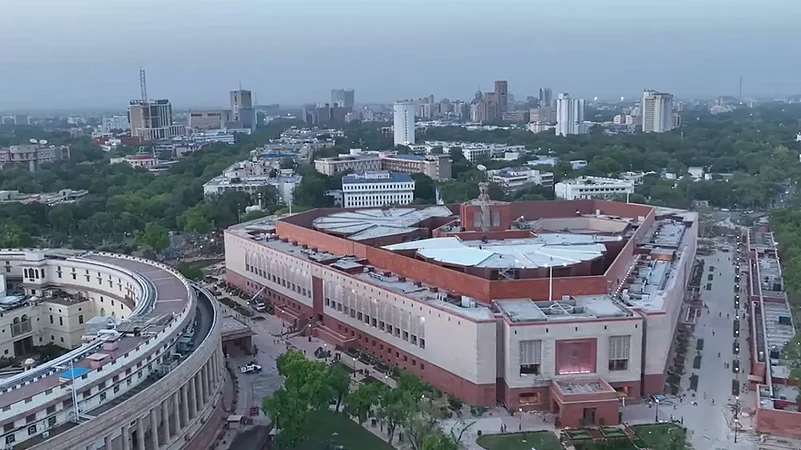The monsoon session of Parliament is set to start from today, July 20, at the new Parliament building, and will be conducted till August 11. It will most likely comprise 15 sittings where 21 new bills and 7 old bills will be up for discussion.
The new Parliament building was inaugurated by Prime Minister Narendra Modi on May 28 amid a boycott by the Opposition.
The Modi government cited the old design, limited space, and lack of technological features in the older parliament complex as some of the reasons to build the new Parliament House, which boasts of more space and much-advanced technology.
Critics have, however, called the new Parliament House a “vanity project” of Modi and something that was not required.
Despite the criticism, the fact remains that the new Parliament House boats of features are not present in the previous complex. Here we list the features of the new Parliament House.
Bigger and spacious building
The enormous, triangular building houses both the legislative chambers of Lok Sabha and Rajya Sabha with much more seating space in comparison with the older complex.
The new LS chamber has thrice the number of seats, with enough space for 888 members, and the new Rajya Sabha has the capacity to seat 248 members. This is light of the fact that delimitation exercise at some point in future might increase the number of MPs in the country.
The 64,500 square metre building combines modern and cultural features, equipped with all the latest technology while also accounting for India’s heritage by taking architectural influences from famous historic buildings like the Rashtrapati Bhavan.
The architecture has many elements that demonstrate Indian culture – the Lok Sabha is based on a peacock theme, the national bird of India, while the Rajya Sabha is shaped like a lotus, the national flower. The building features an open courtyard with a Banyan tree, the national tree of India, further enhancing the building’s ethnic aspect.
The most significant marker of Indian tradition is the placement of Sengol in the Lok Sabha — though there is now a dispute over the claims made by the government. The Centre has hailed the sceptre it as a symbol of transfer of power from the British to Indians.
Technical aspects of the new Parliament
The new Parliament House has ultra-modern offices with digital language interpretation and programmable microphones.
To make voting easier, the chambers have graphical interfaces, biometrics, and smart displays.
The committee rooms will be furnished with cutting-edge audio and visual systems in order to achieve maximum efficiency.
The complex has rainwater harvesting and recycling systems. A ‘platinum-rated green building’, the new building maintains energy efficiency and ensures 100 per cent power backup.
The building has 92 rooms for the Council of Ministers and six committee rooms, along with a courtyard for Parliament members to interact with each other. It comprises a ‘Constitution Hall’ displaying India’s heritage.
To promote unity and inclusivity, the new Parliament building is completely ‘divyang-friendly’ and there are provisions for people with disabilities, ensuring that everyone has easy access to all facilities.
In the future, a library and a dining hall are also planned in the complex.
















